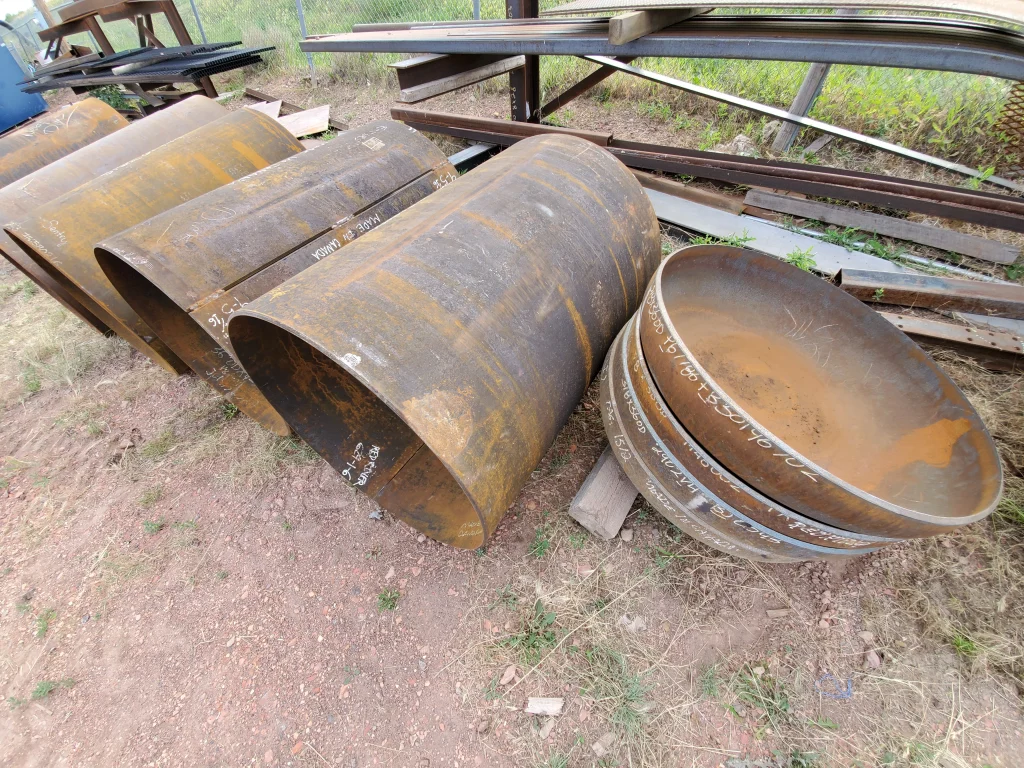
Choosing the Right Material for Pressure Vessel Fabrication: A Comprehensive Guide
Introduction:
Pressure vessels play a crucial role in various industries, from chemical manufacturing to power generation. They are designed to contain and withstand internal pressures, making the choice of material for their fabrication a critical decision. Selecting the most suitable material ensures the safety, durability, and efficiency of these vessels. In this guide, we’ll explore the factors to consider when choosing materials for pressure vessel fabrication and discuss some of the most commonly used options.
- Material Selection Criteria: Selecting the appropriate material for pressure vessel fabrication involves considering several key factors:
a. Mechanical Properties:- Tensile strength, yield strength, and elongation are vital mechanical properties to evaluate.
- Materials should have sufficient strength to withstand the designed pressure.
- Corrosion Resistance:
- Corrosion can weaken a pressure vessel over time. The choice of material should be based on the environment the vessel will operate.
- Materials like stainless steel and high-nickel alloys offer excellent corrosion resistance.
- Temperature Resistance:
- Pressure vessels often experience a wide range of temperatures. Ensure the selected material can withstand the intended temperature range without degradation.
- Weldability:
- Ease of fabrication and the ability to create strong welds are crucial considerations.
- Materials like carbon steel and stainless steel are known for their weldability.
- Cost:
- Budget constraints may impact material selection. It’s essential to balance performance requirements with cost-effectiveness.
- Common Materials for Pressure Vessel Fabrication:
a. Carbon Steel:- Carbon steel is a popular choice due to its affordability, ease of fabrication, and good mechanical properties.
- It is suitable for low to moderate temperature and pressure applications.
- Stainless Steel:
- Stainless steel offers excellent corrosion resistance, making it ideal for corrosive environments.
- It is commonly used in the chemical, pharmaceutical, and food industries.
- High-Nickel Alloys:
- Alloys like Inconel and Hastelloy are known for their exceptional corrosion resistance in highly aggressive environments.
- They are often used in the petrochemical and aerospace industries.
- Aluminum:
- Aluminum is lightweight and has good corrosion resistance, making it suitable for specific applications, such as in the aerospace industry.
- Titanium:
- Titanium is exceptionally corrosion-resistant and has a high strength-to-weight ratio.
- It finds use in critical applications like the medical and aerospace industries.
- Application-Specific Considerations:
- Consider the specific requirements of your pressure vessel application. For example, nuclear reactors demand specialized materials like zirconium, while carbon steel may suffice for air compressors.
- Compliance with Codes and Standards:
- Ensure that the chosen material complies with relevant industry codes and standards, such as ASME Boiler and Pressure Vessel Code or API standards.
Conclusion:
Selecting the right material for pressure vessel fabrication is a crucial step in ensuring safety, performance, and longevity. Consider the mechanical properties, corrosion resistance, temperature resistance, weldability, and cost to make an informed decision. Always adhere to industry codes and standards to guarantee the highest levels of safety and compliance in your pressure vessel design and fabrication process.
- Material Specifics and Applications:
a. Carbon Steel:- Carbon steel is divided into different grades (e.g., SA-516, SA-387) based on its composition and properties.
- It’s commonly used for pressure vessels in industries like oil and gas, chemical processing, and power generation.
- While suitable for many applications, its corrosion resistance can be limited, necessitating proper maintenance.
- Stainless Steel:
- Stainless steel variants such as 304 and 316 offer different levels of corrosion resistance.
- They are ideal for vessels in the pharmaceutical, food processing, and water treatment industries.
- Stainless steel’s longevity and ease of cleaning make it a top choice for hygienic applications.
- High-Nickel Alloys:
- Inconel and Hastelloy are highly corrosion-resistant, making them suitable for aggressive chemical processes.
- Their resistance to pitting, crevice corrosion, and stress corrosion cracking makes them invaluable in extreme environments.
- Aluminum:
- Aluminum pressure vessels are common in aerospace and aviation industries due to their lightweight nature.
- They are also used for cryogenic applications and in some marine environments.
- Titanium:
- Titanium’s exceptional corrosion resistance and strength-to-weight ratio make it valuable in applications where weight reduction is critical.
- It is used in chemical processing, medical implants, and aerospace components.
- Maintenance and Inspection:
- Regardless of the material chosen, routine inspection and maintenance are crucial to ensure the continued safe operation of pressure vessels.
- Regular inspections, non-destructive testing, and adherence to maintenance schedules are essential to detect and address any issues promptly.
- The field of pressure vessel materials is continually evolving, with researchers exploring advanced materials like graphene composites and carbon-fiber-reinforced polymers for increased strength and reduced weight.
- As sustainability becomes more critical, the development of materials with lower environmental impacts may also influence future choices.
In conclusion, the choice of material for pressure vessel fabrication is a multifaceted decision that should consider mechanical properties, corrosion resistance, temperature resistance, weldability, cost, and application-specific requirements. Proper material selection, combined with adherence to industry codes and standards, ensures the safety, reliability, and longevity of pressure vessels across various industries. Keep an eye on emerging materials and technologies so that every pressure vessel manufacturer can be innovative to stay at the forefront of pressure vessel design and fabrication.
- Environmental Considerations:
- In today’s environmentally conscious world, it’s important to consider the ecological impact of pressure vessel materials.
- Some materials may have a higher carbon footprint due to energy-intensive production processes or the extraction of raw materials.
- Choosing materials with lower environmental impacts, recycling options, and sustainability certifications can align your pressure vessel fabrication with green initiatives.
- Risk Assessment and Mitigation:
- Conduct a thorough risk assessment when selecting materials, especially for critical applications.
- Consider factors such as potential failure modes, consequences of failure, and the likelihood of specific failure scenarios.
- Implement mitigation strategies, including redundant safety features or monitoring systems, to reduce risks associated with material selection.
- Collaboration with Experts:
- When in doubt or dealing with complex pressure vessel designs, it’s prudent to collaborate with material scientists, engineers, and fabrication specialists.
- Expert input can help you navigate the intricacies of material selection, ensuring that your pressure vessel meets or exceeds performance and safety requirements.
- Case Studies and Best Practices:
- Look into case studies and best practices within your industry to learn from the experiences of others who have faced similar material selection challenges.
- Real-world examples can provide valuable insights and help you avoid potential pitfalls.
- Continuous Improvement:
- Pressure vessel technology evolves, and new materials and fabrication techniques emerge. Stay informed about industry developments and be open to incorporating improvements into your processes.
In conclusion, selecting the most suitable material for pressure vessel fabrication is a complex and critical decision. It involves a comprehensive assessment of factors like mechanical properties, corrosion resistance, temperature tolerance, cost, environmental impact, and risk mitigation. Collaboration with experts, continuous learning, and a commitment to safety and sustainability are key to making informed decisions and ensuring the long-term success of pressure vessels in various industries.
- Material Certification and Documentation:
- Ensure that the chosen material comes with proper certification and documentation. This documentation is often essential for regulatory compliance and quality control.
- Material certificates should include information on the material’s composition, mechanical properties, and compliance with relevant standards.
- Quality Control and Testing:
- Implement stringent quality control measures during the fabrication process to verify that the chosen material is being used correctly.
- Conduct non-destructive testing (NDT) such as ultrasonic testing, radiographic testing, and dye penetrant testing to detect any defects or weaknesses in the vessel.
- Regulatory Compliance:
- Different industries and regions may have specific regulations governing pressure vessel fabrication.
- Ensure that your material selection and fabrication process comply with these regulations, which may include codes such as ASME, API, or ISO standards.
- Material Lifecycle Considerations:
- Consider the entire lifecycle of the pressure vessel when selecting materials. This includes factors such as material availability, recyclability, and disposal.
- Sustainable materials and practices can reduce environmental impact and long-term costs.
- Training and Education:
- Invest in ongoing training and education for your team involved in pressure vessel fabrication.
- Keeping your staff up-to-date with the latest industry trends, materials, and technologies ensures the highest level of safety and efficiency.
- Contingency Planning:
- Develop contingency plans in case of unexpected material-related issues or vessel failures.
- These plans should outline emergency response procedures and steps to prevent catastrophic failures.
- Record Keeping:
- Maintain thorough records of the material selection process, fabrication procedures, inspections, and maintenance activities.
- Detailed records are valuable for auditing, troubleshooting, and continuous improvement.
- Periodic Review and Optimization:
- Periodically review your pressure vessel materials and design to identify opportunities for optimization.
- Advances in materials science and engineering may offer improved performance or cost savings over time.
In conclusion, the selection of materials for pressure vessel fabrication is a multifaceted process that requires careful consideration of various factors, from material properties to environmental impact and regulatory compliance. A commitment to quality, safety, and continuous improvement is essential to ensure the long-term performance and reliability of pressure vessels across different industries. By following best practices and staying updated with industry advancements, you can make informed decisions that benefit your organization and the safety of your operations.
- Risk Management and Safety Protocols:
- Prioritize safety at all stages of pressure vessel fabrication and operation.
- Develop comprehensive risk management plans that outline potential hazards, safety protocols, and emergency response procedures.
- Material Testing and Validation:
- Before finalizing material selection, conduct thorough material testing and validation to ensure it meets your specific application’s requirements.
- Testing should encompass mechanical tests, corrosion resistance evaluations, and compatibility assessments with process fluids.
- Material Degradation and Aging:
- Recognize that materials may degrade over time due to various factors, including cyclic loading, temperature fluctuations, and exposure to corrosive substances.
- Implement regular inspections and maintenance schedules to monitor and address signs of material aging.
- Industry-Specific Guidelines:
- Different industries may have unique guidelines and standards for pressure vessel materials and fabrication.
- Familiarize yourself with industry-specific resources and experts who can provide guidance tailored to your sector.
- Continuous Research and Development:
- Stay engaged in ongoing research and development efforts within the field of pressure vessel materials.
- Investigate emerging materials and technologies that may offer improved performance, safety, and efficiency.
- Material Traceability:
- Maintain strict material traceability records to track the source, composition, and history of materials used in your pressure vessel.
- This information is invaluable for quality control, audits, and investigations.
- Collaboration with Suppliers:
- Forge strong relationships with material suppliers who can provide expert advice, quality materials, and timely support.
- Collaborative partnerships can lead to optimized material selection and enhanced product quality.
- Third-Party Verification:
- Consider involving third-party experts or organizations to verify the suitability of chosen materials and fabrication processes.
- Independent assessments can provide an extra layer of confidence in your pressure vessel’s integrity.
- Training for Emergency Scenarios:
- Ensure that your team is trained to respond effectively to emergency scenarios, including leaks, ruptures, or other pressure vessel failures.
- Preparedness can minimize potential harm and environmental damage.
- Learn from Incidents:
- If any pressure vessel-related incidents occur, conduct thorough investigations to identify root causes.
- Use these incidents as learning opportunities to refine material selection, design, and safety protocols.
In conclusion, the selection of materials for pressure vessel fabrication is an intricate process that requires a comprehensive understanding of materials science, engineering principles, and safety protocols. By adhering to best practices, continuously improving your processes, and staying informed about industry developments, you can ensure the highest level of safety, performance, and reliability for your pressure vessels across diverse applications and industries.
- Continuous Monitoring and Data Analysis:
- Implement real-time monitoring and data analysis systems to track the performance of pressure vessels in operation.
- This proactive approach can help identify potential issues early and optimize maintenance schedules.
- Material Cost-Benefit Analysis:
- Conduct a thorough cost-benefit analysis when choosing materials to strike a balance between upfront costs and long-term savings.
- Consider factors like material lifespan, maintenance requirements, and energy efficiency.
- Material Innovation:
- Keep an eye on material innovation trends in the industry.
- New materials with enhanced properties, such as improved corrosion resistance or higher temperature tolerance, may become available.
- International Standards:
- If your pressure vessel applications extend beyond national borders, be aware of international standards and regulations.
- Familiarize yourself with standards like EN (European Norms) or JIS (Japanese Industrial Standards) when applicable.
- Expert Consultation:
- Don’t hesitate to seek advice from experts in materials science, engineering, and pressure vessel design.
- Their insights can help you make informed decisions and tackle complex material-related challenges.
- Material Surface Finish:
- Consider the surface finish of the selected material, especially for applications where smooth or hygienic surfaces are essential.
- Proper surface treatments or finishes can enhance performance and prevent contamination.
- Material Availability:
- Ensure a reliable supply chain for your chosen material.
- Sudden material shortages can disrupt production schedules and pose risks to project timelines.
- Adaptation to Changing Conditions:
- Be prepared to adapt your material selection if operating conditions or industry standards change.
- Regularly review the suitability of your materials in response to evolving requirements.
- Public and Environmental Relations:
- Be mindful of public perceptions and environmental concerns related to your material choices.
- Transparent communication about responsible material selection can enhance your company’s reputation.
- Documentation and Reporting:
- Maintain comprehensive records of material selection, testing, inspections, and incidents.
- Clear documentation is essential for regulatory compliance, audits, and continuous improvement.
In conclusion, material selection for pressure vessel fabrication is a dynamic process that requires vigilance, adaptability, and a commitment to safety, efficiency, and environmental responsibility. By embracing the latest technologies, expert guidance, and proactive approaches to monitoring and maintenance, you can ensure the continued success and reliability of your pressure vessels in a rapidly evolving industrial landscape.
Related Blog Post

Understanding Different Types of Failure in Pressure Vessels
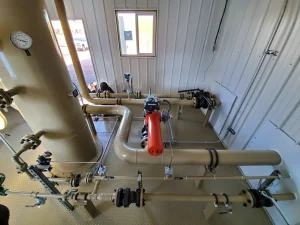
The Most Common Type of Pressure Vessel Used in Industry
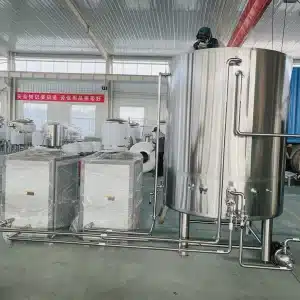
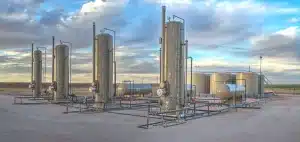
Understanding Adsorption Air Dryers
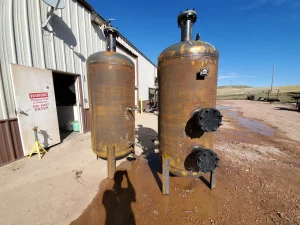
Types of Failure in Pressure Vessels
No pillar keyword set for this post.
